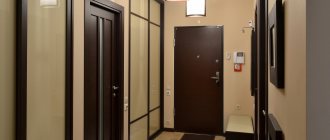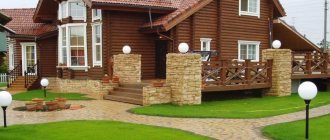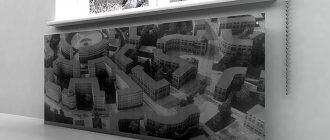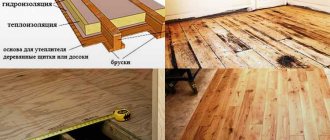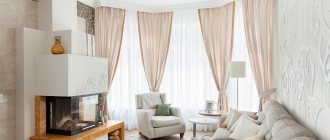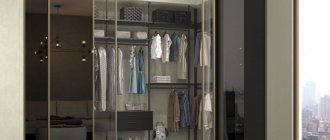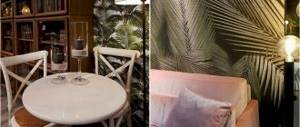All about lighting and lamps
Functions
Functional purpose of lighting:
- security;
- utilitarian;
- façade;
- decorative
To ensure safety from unauthorized persons, remote areas with installed video cameras are illuminated.
To make movement in the evening and at night comfortable, without the risk of injury, lamps are installed along paths, at gates, gates, and above the doors of buildings.
The illuminated façade marks the entrance areas and garage doors. At the same time it adds decorativeness to the design of the building.
Objects
With the correct, thoughtful implementation of the decorative lighting method, you can combine all the functions in it.
The objects for it are:
- garden paths and ordinary paths;
- favorite corners of the dacha territory;
- terraces, gazebos, fireplaces;
- large trees with a picturesque crown;
- shrubs with colorful foliage;
- conifers on an alpine hill;
- flower beds, rose gardens, individual containers;
- arches with climbing plants;
- retaining walls;
- swimming pools and ponds.
Types of backlight
With all the diversity and dissimilarity of architectural and landscape objects, their lighting comes down to three types of decorative light effects.
Flooding diffused light is obtained when individual lighting devices are elevated 0.5 - 1 m above ground level. They are usually located along paths, inside flower beds, flower beds, and on small picturesque lawns.
Spot lighting. The main purpose is to focus light on individual elements of garden architecture, trees, bushes. Such objects can be: stones, sculptures, bridges of reservoirs. Spotlights can be placed in the crown of trees, deep in the bush. A glowing effect is created inside the plant.
Contour. It is decorated using spotlights, spotlights, garlands and LED strips. The main goal is to emphasize the contour of an object or the boundaries of a certain structure. For example: trees, entrance to a gazebo or terrace, garden arch. This way you can define the boundaries of a swimming pool, a decorative pond, or the perimeter of a retaining wall.
Types of luminaires by power source
Lamps for landscape lighting can be divided into several categories based on power sources:
- Ordinary, with direct incandescent lamps.
- LED, powered by 220 volts.
- The same, through a step-down device.
- Solar powered.
The first option is the least suitable due to fragility, high energy consumption, and exposure to temperature and humidity. Power cables and wires under voltage of 220 V pose a threat to human life.
LED sources are the most efficient for use. Economical in consumption, durable in operation (10 - 15 years), convenient and easy to install. Safety can be ensured by connecting through a device that reduces the voltage to 12 volts.
The most convenient option is to use batteries that receive a charge from the sun. Attracts with its autonomy, mobility, and safety. Disadvantages: dependence on clear days, low level of illumination, unstable operation during the dark.
Types of lamps by purpose
Intended use for the site:
- street lamps, lampshades on supports for illuminating driveways, roads, and territory boundaries;
- wall fixtures such as sconces on the facades of buildings and structures;
- spotlights and lamps mounted on supports, racks, trees, gazebos and walls of buildings;
- ground and ground lamps (spot or “spike” type - with a point for sticking into the ground) for illuminating paths, steps, flower beds;
- floating lanterns for creating light spots on the surface (bottom) of artificial reservoirs and swimming pools.
Requirements for outdoor lighting devices
When starting to design and install landscape lighting, you need to carefully consider the installation locations of devices and the method of power supply, and ensure safety measures during operation. Provide protection against the manifestation of children's curiosity.
Necessary requirements for outdoor luminaires:
- The degree of protection against direct ingress of dust and jets of water into the housing is not lower than IP 65 - 66.
- Divide the power supply circuit into several separate circuits with each of them controlled by a separate switch.
- Install devices using incandescent lamps no closer than 1.5 m from plants.
- Use safe low voltage 12 volt equipment whenever possible. Especially if it is used near water.
It is better to entrust the control of external light in the territory to motion sensors, with a timer or a photo relay.
Decorative lighting
How are decorative lamps used?
The functional purpose of decorative lamps is indicated in the name. They are used to decorate shops, hotels, restaurants, etc. Using equipment of this type, you can highlight areas in sales areas and highlight interior details.
In addition to the decorative function, with the help of lamps of this type you can solve utilitarian problems. One of them is the creation of light zones with different color temperatures.
For example, part of a sales floor with general neutral lighting can be equipped with decorative lamps with warm light. Such lighting can be used to display products in warm colors: red, yellow. Warm light can also be used to create a homely atmosphere in the room.
Incorrect selection and placement of decorative lamps can negatively affect the level of comfort of customers. If the equipment is poorly placed, it will dazzle visitors and create glare on the surfaces of goods. Therefore, when choosing lamps, it is necessary to take into account the power of the luminous flux. You also need to pay attention to the presence of protective lampshades.
What types of decorative lamps are there?
Based on the type of light source, decorative lamps are divided into two groups: metal halide lamps and LEDs. It is inconvenient to use MG lamps in retail premises for a number of reasons:
- Metal halide lamps last several times less than LED lamps.
- They emit pulsating light, which negatively affects people’s well-being.
- This type of equipment produces a lot of heat. This increases the temperature in the room and heats the product and surrounding objects.
- Halogen lamps consume more electricity compared to LED lamps.
The optimal choice for retail premises is LED equipment.
Based on the mounting method, they can be classified into recessed, surface-mounted and pendant lamps. Built-in ones are convenient to use in rooms with suspended ceilings. Pendant lights are suitable for rooms with high concrete ceilings. Surface-mounted luminaires are universal solutions for rooms with a ceiling height of up to 3.5 m.
Depending on the installation location, decorative lamps are combined into several groups: ceiling, wall, floor. Recessed lamps can be mounted in shop windows, ceilings, walls, and floors.
What technical characteristics should you pay attention to when choosing?
Decorative lamps are not used for general lighting of retail areas. Therefore, the requirements for luminous flux power and color rendering index fade into the background. It is worth paying attention to the color temperature of the equipment.
If you want to create a cozy atmosphere in a sales area or other room using decorative lighting, choose lamps with a colorimetric temperature below 4000 Kelvin. Equipment with a color temperature above 5000 Kelvin, on the contrary, stimulates active action.
Prefer lamps with metal cooling radiators. They are more durable than equipment that is cooled using built-in fans. In retail premises, coolers quickly break down due to dust, after which the entire lamp has to be replaced.
Which decorative lamp to choose
Pay attention to LED lamps from well-known manufacturers. Choose the shape, mounting method and luminous flux power in accordance with the features of the store interior and the tasks you face. Use low temperature lighting to create a homey atmosphere in your sales area. Prefer lighting fixtures that are cooled using metal radiators.
Tree lighting
There are several ways to decoratively illuminate trees. Large-sized trees with a beautiful crown shape and bizarre bends of trunks and branches look especially impressive.
From below
To emphasize precisely these advantages, a ground-type light source is located on the ground, as close as possible to the trunk, and the beam is directed upward. At the same time, the crown goes into the shadows, and the trunk appears in an absolutely fantastic form.
The method with bottom lighting is excellent for low-growing trees: the visual illusion of perceiving the illuminated part in the surrounding darkness makes the entire tree taller, larger, and more mysterious.
If you want to emphasize the beauty of a tree with a luxurious, lush crown, then this can be achieved using the same ground lamp. It is better if it has a directional light flux similar to a spotlight. It should be located a few meters from the trunk so that the lower branches do not interfere. The power of the device is selected in direct proportion to the height and size of the object.
In this light, coniferous trees with a pyramidal crown look great: spruce, larches. If the crown is spreading, like that of a pine or cedar, you can install lanterns at several points along the line of the tree trunk circle. The result will be the same: the foliage or needles will acquire a rich color with many shades, and the trees will look taller and more powerful.
Another interesting method is called “gabius” or contour lighting. Exactly the same lamps are used, only they are located a short distance behind the tree. The stream of light is directed upward. At the same time, the silhouette of the illuminated object is clearly visible from the front side, the color and structure of the crown are smoothed out. The method is best suited for conifers.
If a hedge of coniferous trees is planted along the perimeter, lamps placed behind and directed into the area will draw the fence into the shade and visually expand the boundaries.
When selecting light sources, the following rule applies: their brightness with contour lighting should be higher than with front lighting.
Above
In nature, lighting trees from below is rare. Unless they are on top of a hill with the setting sun in the background. More natural - on top, also used as decorative. The object along with the adjacent part of the territory falls into the light zone. A feeling of comfort and coziness arises against the background of surrounding darkness.
The method is more suitable for illuminating low-growing trees. The lamps are located on supports or racks.
From the inside
The placement of lighting devices inside the crown of large trees looks very impressive. You can highlight the most interesting details (an unusual bend in the trunk, a decorative birdhouse), and highlight the circle around the trunk with light.
To ensure that the equipment is invisible during the day, its elements should be selected in small sizes. The wiring is also carefully hidden among the branches.
Lamps for decorative lighting: types and their features
Surely you have already realized that not every lighting device is suitable for decorative interior lighting - special lamps have been developed for these purposes. As a rule, they are built-in, but among all their variety there are also outdoor lighting fixtures. By and large, even a chandelier of a special design can be classified as this type of lighting device. In general, among the most common lighting devices of this type, the following options can be distinguished.
Decorative lighting photo
Lamps for decorative lighting photo
In principle, you can go back a little and remember the lamps that were used for decorative interior lighting a few decades ago. These are all kinds of neon tubes, which were called light beams. Large and bulky, they were not very convenient to use and that is why, with the advent of an alternative, they quickly found themselves on the outskirts of a historical landfill.
Shrub lighting
They are illuminated in the same ways as low trees.
From below
The lamp is located at a distance from the bush equal to its height and is directed upward. With this lighting, the shape and details of the foliage become clearly visible.
Contour lighting is great for shrubs with small foliage; dense and regularly shaped crown.
Above
A method with a soft transition of illuminated areas into the surrounding darkness. Street lamps with diffused or directional light are used as lamps. They are placed on supports or bollards - low posts.
From the inside
When the light device is located inside the object and the flow is directed upward, the internal structure of the bush stands out very well: individual leaves, rosettes of inflorescences. The contours are faintly visible, the plant seems taller.
Side
The method is very good for highlighting groups of plants and hedges. The smooth transition from light to shadow on each bush creates the effect of depth of space. Rotary spotlights are placed both on the ground and on bollards.
As a separate decorative technique, you can consider using intersecting streams of light. The main application is compositions using small architectural forms: sculptures, amphorae, flowerpots. A stunning effect is obtained by directing colored lamps from different points onto a small artificial waterfall.
Decorative lighting: what is usually illuminated
Literally, you can illuminate anything in a room - both individual small elements and entire surfaces are no exception. To make it easier to understand the enormity of these possibilities, we will give a few examples.
Decorative ceiling lighting photo
Ceiling decorative lighting photo
In principle, this list can be continued for a long time, but at least it is tedious. And it's not necessary. The main thing is to understand that everything can be illuminated, including the house as a whole. Decorative lighting of facades is no longer an innovation, and it is used almost everywhere. Such lighting is done using various lighting devices, which are worth discussing separately.
LED garlands
LED garlands have become widespread in landscape lighting. The reasons are simple:
- LED service life is measured in tens of thousands of hours;
- electricity is consumed in minimal quantities;
- do not heat up during operation;
- design for outdoor use;
- ease of installation.
You can see them in all populated areas. Clip-light and play-light garlands become especially relevant during the New Year holidays. In the first case, the diodes are mounted in sockets on the tape, in the second - on short branches of the main wire.
Color effect
When designing lighting solutions, you need to take into account the influence of the color component and the power of the devices on the result.
It has been noticed that cold light visually removes objects, while warm light, on the contrary, makes them closer.
A powerful stream of light does not produce penumbra and reduces the overall picture of landscape lighting to a primitive one.
The use of several colors when lighting trees and bushes takes this pleasant activity to a whole new level. For example, you can highlight the water in an artificial pond or pool in blue, and the surrounding conifers and bushes can be marked with green or white color spots.
Spruce or larch, illuminated by a white stream of light, will look as if sprinkled with frost.
Two multi-colored spotlights aimed at a large tree will give it an absolutely fantastic look.
You need to remember one thing: in everything you need to take precautions so as not to turn landscape lighting into illumination for a casino.
Lighting works
Decorating a tree or bush with an LED garland is not difficult. Laying out underground cables and overhead lines to connect lighting fixtures throughout the site is a task for specialists.
Calculate the cross-section of wires, select cable brands, lay them at the required depth, equip them with lamps, connect to a high-voltage network - all this requires professional knowledge.
Timely completion of work on wiring the electrical cable to the required points on the site will avoid damage to the grass and garden paths.
The quality of modern materials and proper installation allow the use of landscape lighting in the territory of a summer house or private house at any time of the year.
Useful video from our expert about types of garden lighting:
Types of decorative lighting for a country house
There are four main types of backlighting. Each type has its own advantages, and the decision to use one or another option is made by the designer, who, when choosing, always takes into account the style, architectural features of the building, as well as the preferences of the home owner.
Accent home lighting design
This is the most popular, universal type of lighting decor. The secret of its popularity is its ability to be used for buildings of any style. The emphasis is on the most original elements of the facade: balconies, cornices, columns or door and window openings are often illuminated. Such local street lighting is performed using bright lamps. They are fixed directly on the facade of the building.
Dynamic home lighting design
This design can combine several types of decor, since its main differences are changes in the intensity of the light flux and the color of the lighting. To achieve this result, sensors and special controllers are used. Lighting changes with changes in time, weather, etc.
Automation can be responsible for control, but manual mode is also possible. The main elements of the system are LED lamps, strips, and spotlights. To control the devices, special equipment is used. Due to its complexity, this type of lighting is used less frequently for private homes.
Flood lighting design for home
Its main task is to guarantee the integrity of the perception of the house. This type of design is used for monuments, as well as buildings that stand alone and are not tied to other architectural objects. In this case, the effect is achieved using fairly powerful LED spotlights.
Lighting fixtures are placed at some distance from the walls of the house: either directly on the ground or on special supports. For this type of design, correct calculation of the distance and angle of incidence of light rays is extremely important. Inaccuracy will result in light that is uneven or unclear.
Contour design of house lighting
The original type of decorative design of the facade is to highlight the outlines of the house. In this case, the lighting devices are LED cords or strips, as well as spotlights.
Contour innovative lighting allows you to highlight the entire facade or only its individual elements: the roof, balcony, window, doorways, stair railings, fences or terrace.
